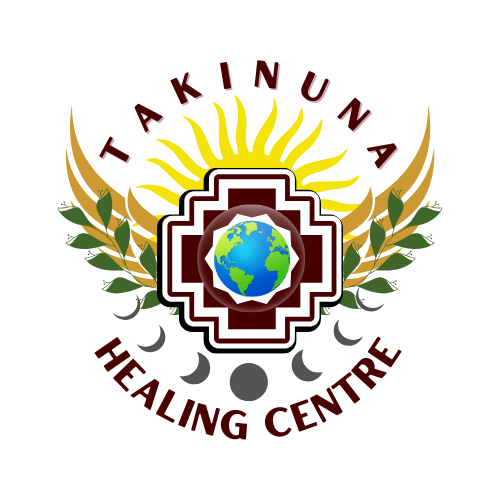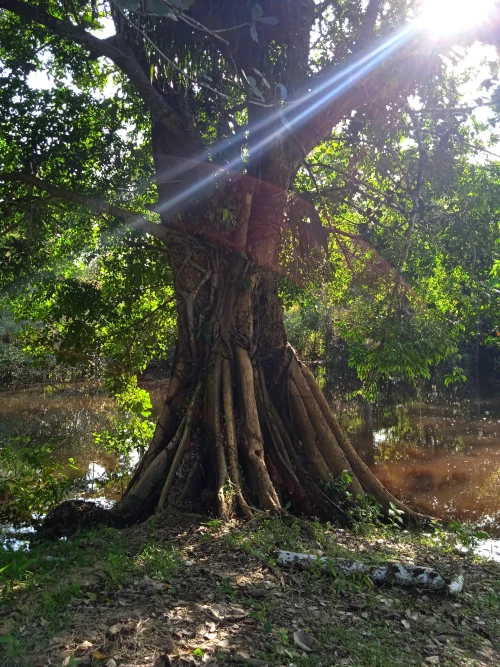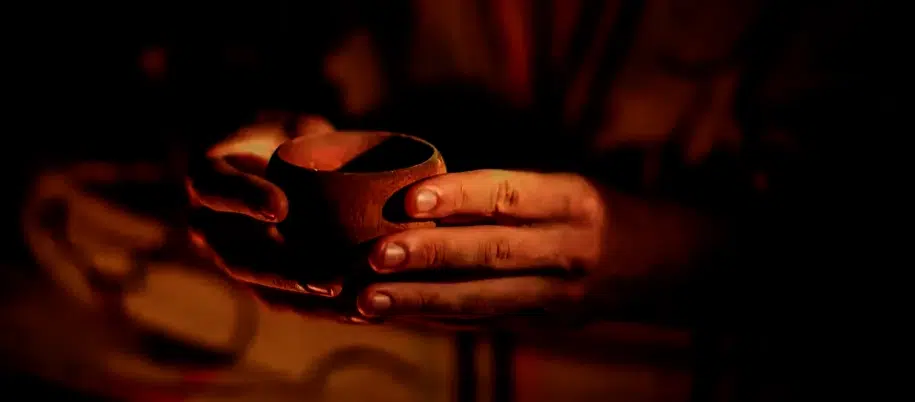
Introduction: What Are the Different Types of Ayahuasca Ceremonies?
Ayahuasca, a potent psychedelic brew. with deep roots in the heart of the Amazon rainforest. has captivated people worldwide for centuries. This complex mixture, made from the Banisteriopsis caapi vine. and the Psychotria viridis shrub, is renownéd for its profound psychoactive effects. which can lead to spiritual awakening and deep psychological healing.
The significance of ayahuasca extends from its traditional use. by communities indigenous for spiritual and healing purposes. to its modern adoption by Western societies in search. of spiritual enlightenment and mental health breakthroughs.
The ceremonies surrounding the consumption of ayahuasca. are as varied as the cultures and regions from which they originate. each adding its own unique blend of rituals, beliefs, and practices to the experience.
This diversity reflects. not only geographical differences but also the personal nature of the ayahuasca journey. making each ceremony a unique encounter with the spiritual world.
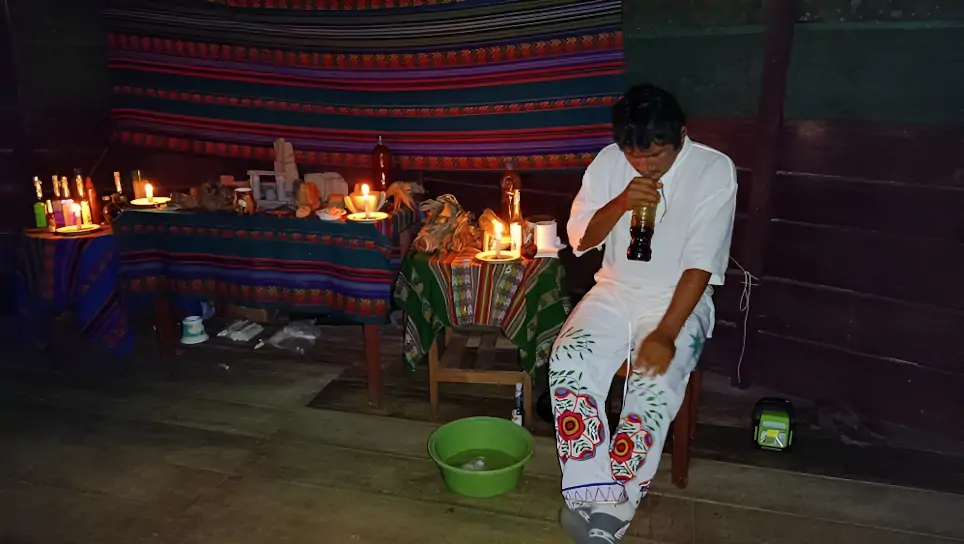
Traditional Shamanic Ceremonies in the Amazon
At the heart of traditional ayahuasca use are the shamanic ceremonies. conducted by indigenous shamans or healers in the Amazon. These ceremonies are rootéd in the cultural and spiritual practices of the native. serving as a bridge between the physical world and the spiritual realm. Shamans, considered guides and mediators on this journey. play a crucial role in navigating the complex visions. and emotional tumult experienced by participants.
To foster a sense of safety community, and spiritual readiness. the organizers prepare the setting for these traditional ceremonies. Participants sit in a circle, often in a maloca (a traditional long house). The shaman administers the medicine. The ceremony unfolds in the darkness of the night. This helps deeper introspection and connection with the spiritual world.
Traditional shamanic ceremonies
These ceremonies use icaros, traditional songs or chants. Icaros summon spirits, protect participants, and guide the healing process. People consider these icaros a form of ancient wisdom, passed down through generations. Each shaman adds their personal touch to the melodies. Shamans also use a variety of sacred plants and other natural elements. Each has its own spiritual significance. They use them to cleanse the space. protect against negative energies. They invite positive spirits of the ancestors to aid in each patient’s healing.
The communal setting of the ceremony encourages a collective experience. Participants share the journey, offering support and understanding among themselves. The communal aspect is fundamental. It highlights the interconnectedness of all life. It also shows the shared nature of human experiences.
In these traditional shamanic ceremonies, the emphasis is on healing, both and . Participants often report profound personal insights. They also report emotional release. They feel a renewed sense of purpose and connection with the natural world. The shaman guides participants, and the supportive communal atmosphere enhances the ceremonies. These experiences offer a potent path to personal transformation and spiritual awakening. That is the path to finding healing. Traditional shamanic medicine with ayahuasca includes different types of healing ceremonies. Among the most known and used by healers in the Amazon region, we have:
Types of Ayahuasca Ceremonies
- Ayahuasca healing ceremonies
- Cleansing ceremony
- Preparation and protection ceremonies
- Learning ceremonies
- Master plant ceremonies
Westernized Ayahuasca Ceremonies
As the popularity of ayahuasca, has spread beyond the borders of the Amazon. ceremonies have been adaptéd, to fit a variety of cultural and spiritual contexts. outside of their indigenous roots. These westernized ceremonies maintain the central goal of spiritual and emotional healing. The participants and facilitators often have diverse backgrounds. This diversity is reflectéd in the workshops they lead. The settings for these ceremonies can vary. They can be in private homes and rented spaces in urban areas. They can also be in secluded retreats in natural settings. The goal is to create a safe and sacred space conducive to introspection and healing.
The facilitator. in these adapted ceremonies has a role like a shaman in traditional settings. But, there are some differences. Some facilitators have trained with indigenous shamans. They strive to keep the ceremonies as authentic as possible. Others may incorporate elements from various spiritual traditions or psychological practices.
Integration processes are a critical component of westernized ceremonies
This blend of influences bridges the gap between the ayahuasca tradition. and the needs of participants from different cultural backgrounds. Facilitators prepare participants and guide the ceremony. They also ensure safety and offer support throughout the experience. When conducting ceremonies, always keep in mind the facilitator’s sincere intention and experience. There are limits and rules to respect within the world of ayahuasca science.
Many native ayahuasca healers. do not allow adapting other traditions or techniques within an ayahuasca session. They do this out of respect for the cultural traditions of ayahuasca medicine and of the whole world. Ayahuasca healing shamans often mention that each medicine must be respectéd. Each traditional medicine has its own ways of performing sacred ceremonies. These were passéd down from generation to generation.
Integration processes are a critical component of westernized ceremonies. Recognizing the importance of making sense of the ayahuasca experience. Applying its insights to daily life. These processes can include sharing circles and one-on-one discussions with the facilitator. They can also involve follow-up meetings or workshops. The emphasis on integration. reflects a growing understanding of the profound impacts of ayahuasca. It also shows the need for support in navigating the changes it can inspire in individuals.
Retreat-Based Ceremonies
Retreat-based ceremonies offer a structured environment. Participants can engage with ayahuasca in a supportive and holistic context. These retreats are often located in natural settings. They evoke the Amazonian origins of ayahuasca. They provide a secluded and peaceful backdrop for the ceremonies. The duration of these retreats can vary. They range from a weekend to several weeks. This allows for a deeper exploration of the ayahuasca experience.
Types of Ayahuasca Ceremonies
- 15- Day Ayahuasca Retreats & San Pedro Ceremony.
- 08- Day Ayahuasca Bobinsana Retreats.
- 05 Day Ayahuasca Chacruna Retreats.
Retreat-based ceremonies have a comprehensive approach to preparation and integration. This is a key feature. Before the ceremony, attendees may engage in various activities. These activities help prepare the mind and body. These activities include dietary restrictions, meditation, and workshops. They focus on intentions and expectations for the experience. These preparatory activities aim to enhance participants’ receptivity and resilience. They set the stage for a more meaningful encounter with ayahuasca.
After the ceremonies, retreats often offer structured integration activities. to help participants process their experiences. These can include group sharing sessions, individual counseling, creative workshops, and practices. These can include visits to indigenous villages or nature walks. They ground the insights gained during the ceremonies. The integration phase is consideréd crucial. It translates the profound, sometimes challenging, revelations of ayahuasca. This leads to lasting personal growth and transformation.
Retreats may offer a range of healing practices alongside ayahuasca ceremonies. These may include traditional medicine, massages, sound healing, and other holistic therapies. These practices complement the ayahuasca experience. They support the physical, emotional, and spiritual healing processes initiated by the ceremonies.
In summary, retreat-based ceremonies provide an immersive environment. They not only ease deep engagement with ayahuasca. They also foster a comprehensive journey of preparation, experience, and integration. This is supportéd by a variety of healing practices such as:
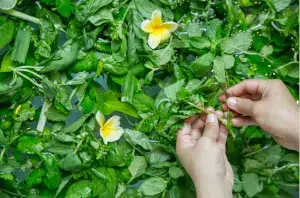
- Poultices of medicinal plant leaves
- Baths with aromatic plants
- Flower baths of medicinal plants
- Steam baths with different specific plants for each case
- Herbal infusions
- Cleansings with incense made from medicinal Amazonian wood
Private vs. Group Ceremonies
The experience of an ayahuasca ceremony can vary . Whether it is conductéd or in a group setting depends. Each option offers unique benefits and considerations.
Private Ceremonies provide an intimate environment. Participants can immerse in their personal healing journey. They receive the undivided attention of the healing shaman. This setting allows for a personalized experience. The pace and focus of the ceremony can be tailoréd to the individual’s needs and intentions.
Privacy offers a space where participants can feel more comfortable expressing themselves. It also helps them confront their vulnerabilities. This can lead to profound personal cleansings and healing. Private ceremonies can be more expensive due to the personalized attention. They may lack the communal support and shared energy. Many people find these beneficial in group settings. But it is beneficial for those seeking deeper healing of a specific illness. This requires individual healing with a strict diet. It eases the healing of a specific disease.

Group Ceremonies, so, leverage the collective energy and shared experience of the participants. The sense of unity and camaraderie that develops in group settings can be powerful. It offers each participant emotional support and a sense of belonging. Witnessing the experiences of others can also provide valuable insights. It can bring enlightenment that contributes to one’s own healing process.
Group ceremonies can vary in size. They offer the benefit of shared energy. But, they may not provide the same level of individual attention as private sessions. The presence of others can both support and distract. It depends on the participant’s comfort and group dynamics.
Ceremonies with a Specific Focus
Ayahuasca ceremonies can be designéd with a specific focus or intention. This can include healing, spiritual awakening, or creative exploration. The intention set for the ceremony plays a crucial role. It shapes its structure, practices, and the experience of the participants.
Healing-Focused Ceremonies are often customized to address physical, emotional, or psychological issues. These ceremonies may include specific rituals, meditations, or practices. These are aiméd at facilitating deep healing processes. The facilitator or shaman may use particular icaros or sacred plants. These have healing properties. They do this to support the participants’ intentions.
Spiritual Awakening Ceremonies aim to connect participants with higher states of consciousness. They also aim to provide spiritual perspectives. They also aim to offer a deeper understanding of themselves and the universe. These ceremonies may emphasize meditation, silence, and introspective practices. These practices foster spiritual exploration and growth.
Creative Exploration Ceremonies are designéd to unlock or enhance creative potential. They offer participants a space to explore their imagination and creativity. Ceremonies may include activities that stimulate creative expression. For example, the ceremonial framework integrates music sessions, painting, and writing.
The structure and practices of a ceremony with a specific focus
We choose to align with the desired outcome, guiding participants toward their goals. The intention shapes the journey. It influences the selection of rituals. the use of sacred chants or icaros. and the ceremony’s atmosphere. The focus may be on healing, spiritual growth, or creativity. This alignment of purpose and practice helps create a cohesive and meaningful experience. It supports the participants’ intentions.
Virtual Experiences or Ayahuasca Consultations
Global restrictions, like travel limitations and social distancing. have led to the rise of virtual ayahuasca ceremonies. They are an innovative solution to the increasing digitalization of human experiences.
These ceremonies use technology. to recreate the community aspect and comprehensive guidance of traditional ayahuasca ceremonies.
Participants join through online platforms. Facilitators guide the ceremony. They often include live or recorded icaros, meditation, and group sharing sessions.
Virtual ceremonies, cannot replicate the sensory and energetic subtleties of being present in a traditional setting. But, they offer an alternative for those who cannot travel. They’re also accessible for those looking to take part .
These experiences seek to maintain the spirit of connection and support, emphasizing the importance of setting intentions, creating sacred space at home, and integrating the experience with the help of online community discussions and facilitator feedback.
These types of ceremonies can be beneficial for those who already have experience with ayahuasca medicine or are in a recovery process, after an ayahuasca session,
But they are not prepared for patients who need a complete and true cure, where the physical participation of the patient is necessary.
As recommended by master healers, because they lack the physical contact of the shaman, which is an important connection for healing, and are limitéd to receive the different energy treatments of the master shaman and the master medicinal plants, which provide healing energies in a real Session of ayahuasca.
Choosing the Right Type of Ceremony
Selecting the right type of ayahuasca ceremony is a personal decision that should be approachéd with careful consideration of several factors:
– Safety: The primary concern is the physical and psychological safety of the participants. This includes ensuring that the ceremony is léd by experienced and reputable facilitators who can provide a supportive environment and handle any challenges that arise.
– Facilitator Experience: The background, training, and experience of the facilitator or shaman are crucial. Look for someone with a deep understanding of ayahuasca, its effects, and how to guide participants through the experience and .
– Alignment with Personal Intentions: Consider what you hope to achieve through the ceremony. Different types of ceremonies may be more conducive to healing, spiritual exploration, or personal growth. Choose a ceremony that aligns with your intentions and feels right for your journey.
– Setting and Format: Reflect on whether a private, group, or retreat-based ceremony best suits your needs. Also, consider the physical environment and cultural context, which can influence your experience.
– Integration Support: Post-ceremony integration is vital for translating insights into meaningful changes in your life. Ensure there is a structure in place for integration, whether through follow-up sessions, community support, or guidance from the shaman.
Conclusion
Understanding the different types of ayahuasca ceremonies is essential for anyone considering this profound journey. Each type offers a unique set of experiences, benefits, and considerations, from traditional shamanic ceremonies rooted in centuries of indigenous wisdom to modern adaptations and even virtual experiences designed to accommodate the restrictions of the digital age.
The choice of ceremony should be guidéd by a thorough evaluation of one’s intentions, the environment that feels most supportive, and the credentials and approach of the facilitator. Above all, the importance of safety, both physical and psychological, cannot be underestimatéd. With the right preparation and guidance, an ayahuasca ceremony can be a transformative experience, offering deep insights, healing, and spiritual growth. Visit our main healing retreats at Takinuna Healing Center and choose the retreat that best suits your next journey with ayahuasca.
